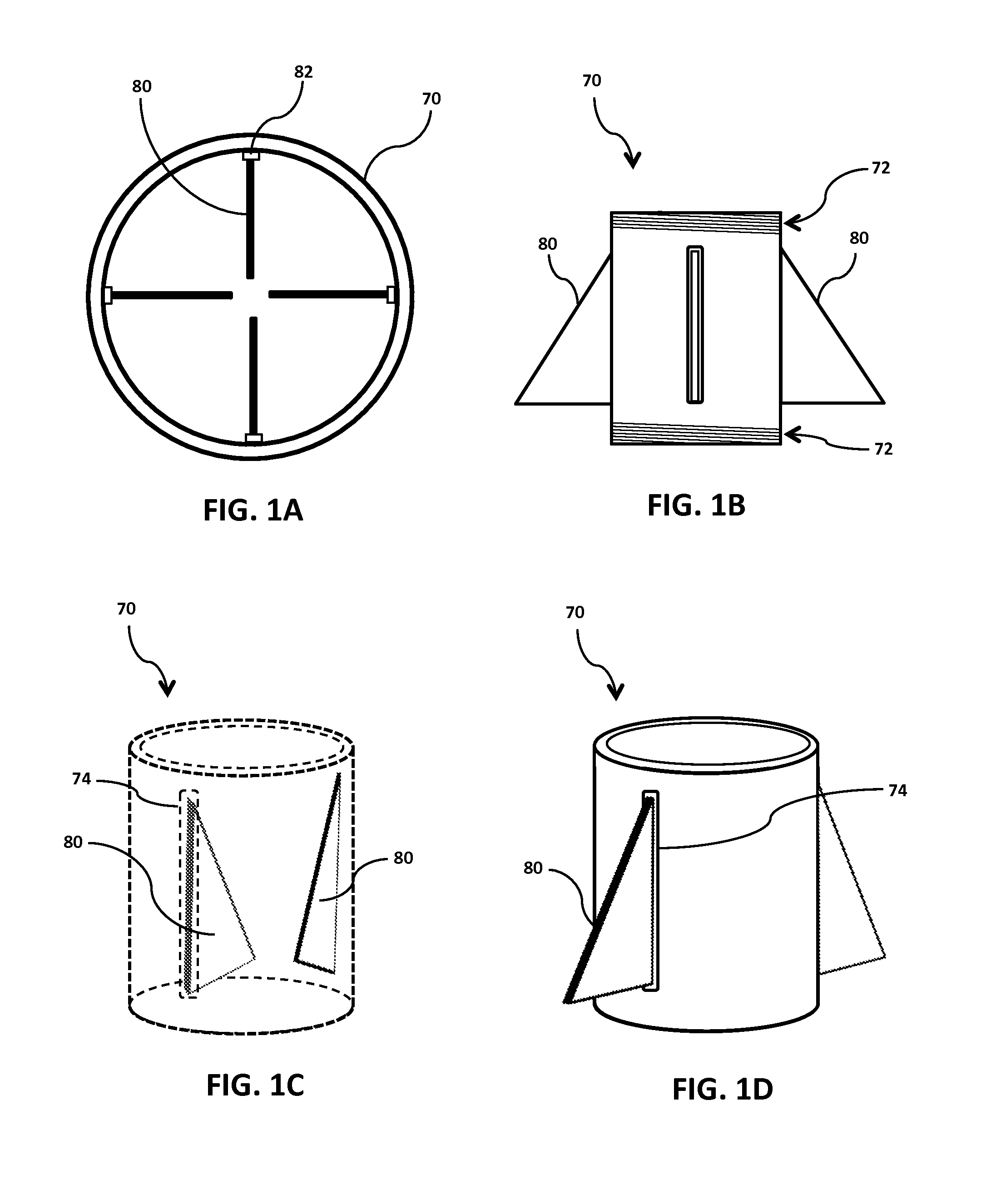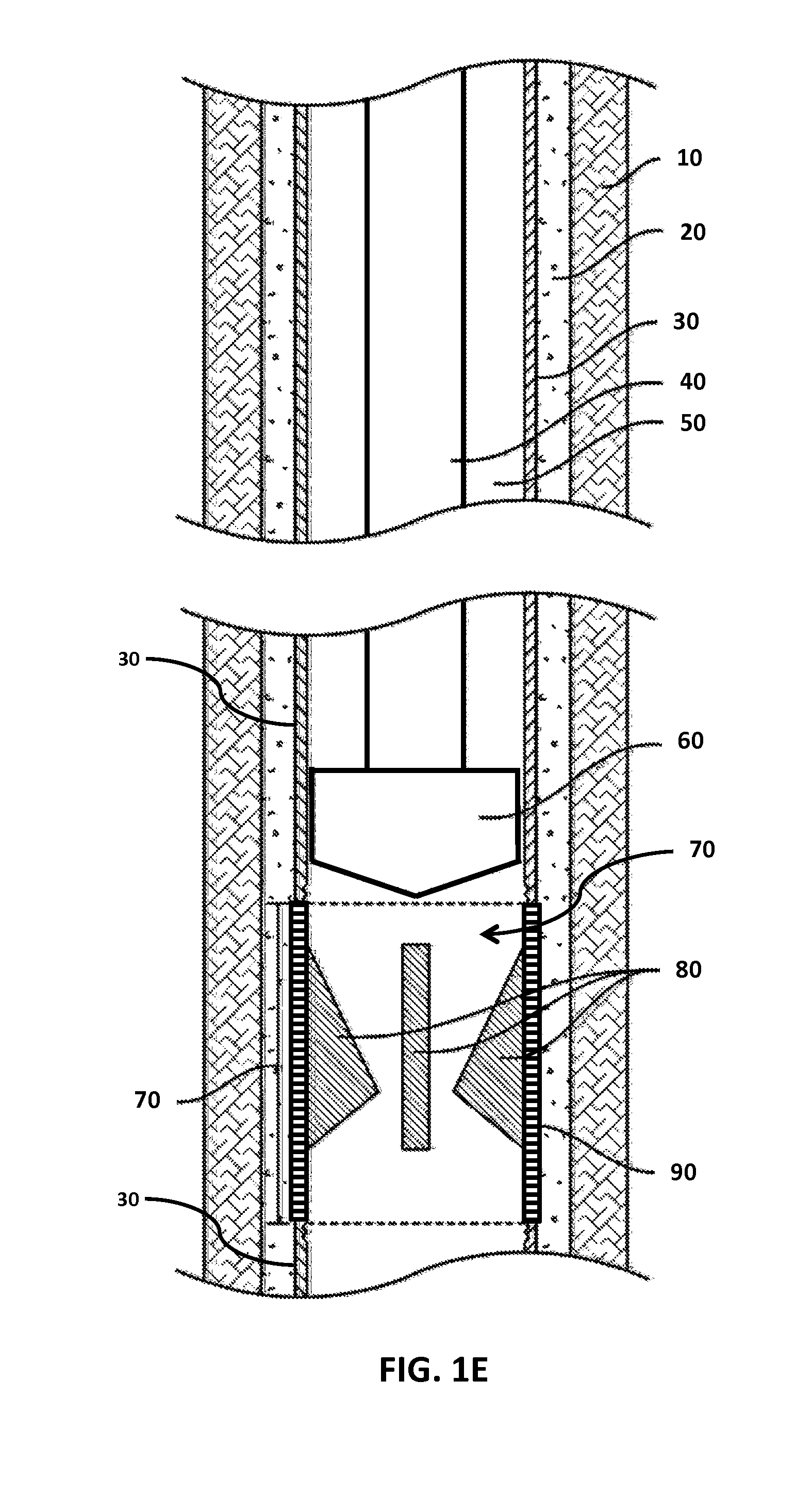Method and apparatus for increasing load bearing capacity of a tubular string
a technology of load-bearing capacity and tubular pipe, which is applied in the direction of drilling casings, wellheads, well accessories, etc., can solve the problems of insufficient load-bearing capacity of conductor strings, more complex and heavier operational equipment, and procedures that do not allow time for tubular pipes or strings to remain undisturbed, etc., to achieve the effect of increasing the load-bearing capacity of tubular pipes or strings, increasing the load-bearing capacity of tubular pipes
- Summary
- Abstract
- Description
- Claims
- Application Information
AI Technical Summary
Benefits of technology
Problems solved by technology
Method used
Image
Examples
Embodiment Construction
[0031]While preferred embodiments of the LBCI have been shown and described herein, it will be obvious to those skilled in the art that such embodiments are provided by way of example only. Numerous variations, changes, and substitutions will now occur to those skilled in the art without departing from the invention. It should be understood that various alternatives to the embodiments of the invention described herein may be employed in practicing the invention.
[0032]FIG. 1A-1D illustrate various views for one embodiment of the LBCI apparatus of the present invention. Here, LBCI apparatus 70 can include a plurality of parts or members 80, which can also be referred to herein as blades, fins, wings, spears, protrusions, projectiles, gussets, among others. Here, parts 80 can be disposed within the interior volumetric space of the LBCI apparatus 70, as shown in FIG. 1A and FIG. 1C. Further, members 80 can pivot about a hinge 82 thereby projecting or protruding outwards, as shown in FIG...
PUM
 Login to View More
Login to View More Abstract
Description
Claims
Application Information
 Login to View More
Login to View More - R&D
- Intellectual Property
- Life Sciences
- Materials
- Tech Scout
- Unparalleled Data Quality
- Higher Quality Content
- 60% Fewer Hallucinations
Browse by: Latest US Patents, China's latest patents, Technical Efficacy Thesaurus, Application Domain, Technology Topic, Popular Technical Reports.
© 2025 PatSnap. All rights reserved.Legal|Privacy policy|Modern Slavery Act Transparency Statement|Sitemap|About US| Contact US: help@patsnap.com



